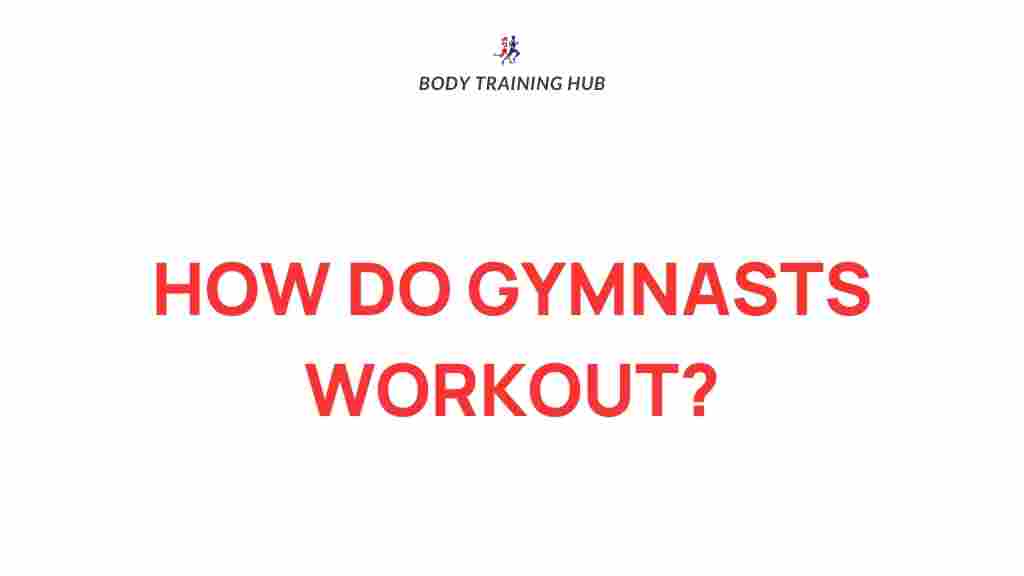Uncover the Secret Training Regimen of Elite Gymnasts
Gymnasts are some of the most physically demanding athletes in the world. Their training regimens are not only rigorous but also tailored to develop strength, flexibility, balance, and coordination. In this article, we will explore the secrets behind the workout routines of elite gymnasts, detailing the specific exercises and flexibility training that contribute to their success. Understanding these training methods can provide valuable insights for aspiring gymnasts and fitness enthusiasts alike.
The Foundation of Elite Gymnastics Training
The training regimen of elite gymnasts is built on a solid foundation that emphasizes several key components. These components are essential not only for performance but also for injury prevention. Here are the core aspects of their training:
- Strength Training: Developing muscle strength is crucial for gymnasts to perform complex routines.
- Flexibility Training: Flexibility is vital for executing various skills and preventing injuries.
- Skill Development: Regular practice of specific gymnastics skills and routines is fundamental.
- Endurance Training: Building stamina helps gymnasts maintain performance throughout long training sessions and competitions.
- Recovery: Adequate rest and recovery strategies are essential to support training intensity.
Daily Schedule of an Elite Gymnast
Elite gymnasts typically follow a strict daily schedule that includes multiple training sessions, each focused on different aspects of their performance. Here’s a breakdown of a typical day in the life of a gymnast:
- Morning Session:
- Warm-up: 30 minutes of dynamic stretches and light cardio.
- Strength Training: 60 minutes focusing on core, upper body, and leg exercises.
- Skill Practice: 90 minutes on apparatus such as the balance beam and uneven bars.
- Afternoon Session:
- Flexibility Training: 30 minutes of static and dynamic stretches.
- Endurance Training: 30 minutes of cardio, such as running or cycling.
- Routine Practice: 90 minutes focusing on full routines and performance simulation.
- Evening Session:
- Cool Down: 30 minutes of stretching and relaxation exercises.
- Recovery: Techniques such as foam rolling or massage therapy.
Essential Exercises in a Gymnast’s Regimen
To achieve the strength and flexibility needed for gymnastics, elite gymnasts incorporate a variety of exercises into their training regimens. Below are some essential exercises that are commonly practiced:
Strength Exercises
- Pull-Ups: Great for upper body strength, targeting the back and arms.
- Handstand Push-Ups: Builds shoulder strength and stability.
- Leg Lifts: Strengthens the core and hip flexors, crucial for various gymnastics skills.
- Squats: Essential for lower body strength, helping with jumps and landings.
Flexibility Exercises
- Splits: Increases hip flexibility, allowing for better leg positioning during routines.
- Backbends: Enhances spinal flexibility, critical for many gymnastics movements.
- Shoulder Stretching: Improves shoulder mobility, which is necessary for bar routines.
- Dynamic Stretching: Incorporates movements that prepare the body for performance while enhancing flexibility.
Secrets to Developing Flexibility
Flexibility is one of the most critical attributes for gymnasts, influencing their ability to perform intricate movements with grace. Here are some secrets to achieving elite-level flexibility:
- Consistency: Engage in daily flexibility routines to gradually increase range of motion.
- Warm-Up Properly: Always begin with a thorough warm-up to prevent injury.
- Incorporate Variety: Use a mix of static, dynamic, and PNF (Proprioceptive Neuromuscular Facilitation) stretches.
- Listen to Your Body: Avoid pushing too hard; flexibility gains take time and patience.
Common Challenges and Troubleshooting Tips
While training as an elite gymnast can be rewarding, it also comes with its own set of challenges. Here are some common issues and tips on how to overcome them:
1. Injury Prevention
Injuries are a common concern for gymnasts due to the high-impact nature of the sport. Here are tips to minimize injury:
- Ensure proper technique during all exercises.
- Incorporate rest days into your training schedule.
- Focus on strengthening smaller muscle groups to support larger ones.
2. Mental Blocks
Mental blocks can hinder performance, especially when attempting new skills. To combat this:
- Practice visualization techniques to improve confidence.
- Break down skills into smaller, manageable components.
- Seek support from coaches or peers for encouragement.
3. Time Management
Balancing training with other life commitments can be challenging. Consider these strategies:
- Establish a structured schedule that prioritizes training sessions.
- Utilize time management tools, such as planners or apps.
- Communicate with family and friends about your commitments to gain their support.
Conclusion: Embracing the Elite Training Regimen
The training regimen of elite gymnasts is a complex and multifaceted approach that combines strength, flexibility, skill development, and recovery. By uncovering the secrets behind their workout routines, aspiring gymnasts can gain valuable insights into how to enhance their own training. Remember that consistency, patience, and a focus on both physical and mental aspects of training are key to success in gymnastics.
For more information on gymnastics and training techniques, visit Gymnastics.org. Additionally, if you’re looking for specific workout plans and routines, check out this resource.
This article is in the category Training Guides and created by BodyTraining Team
